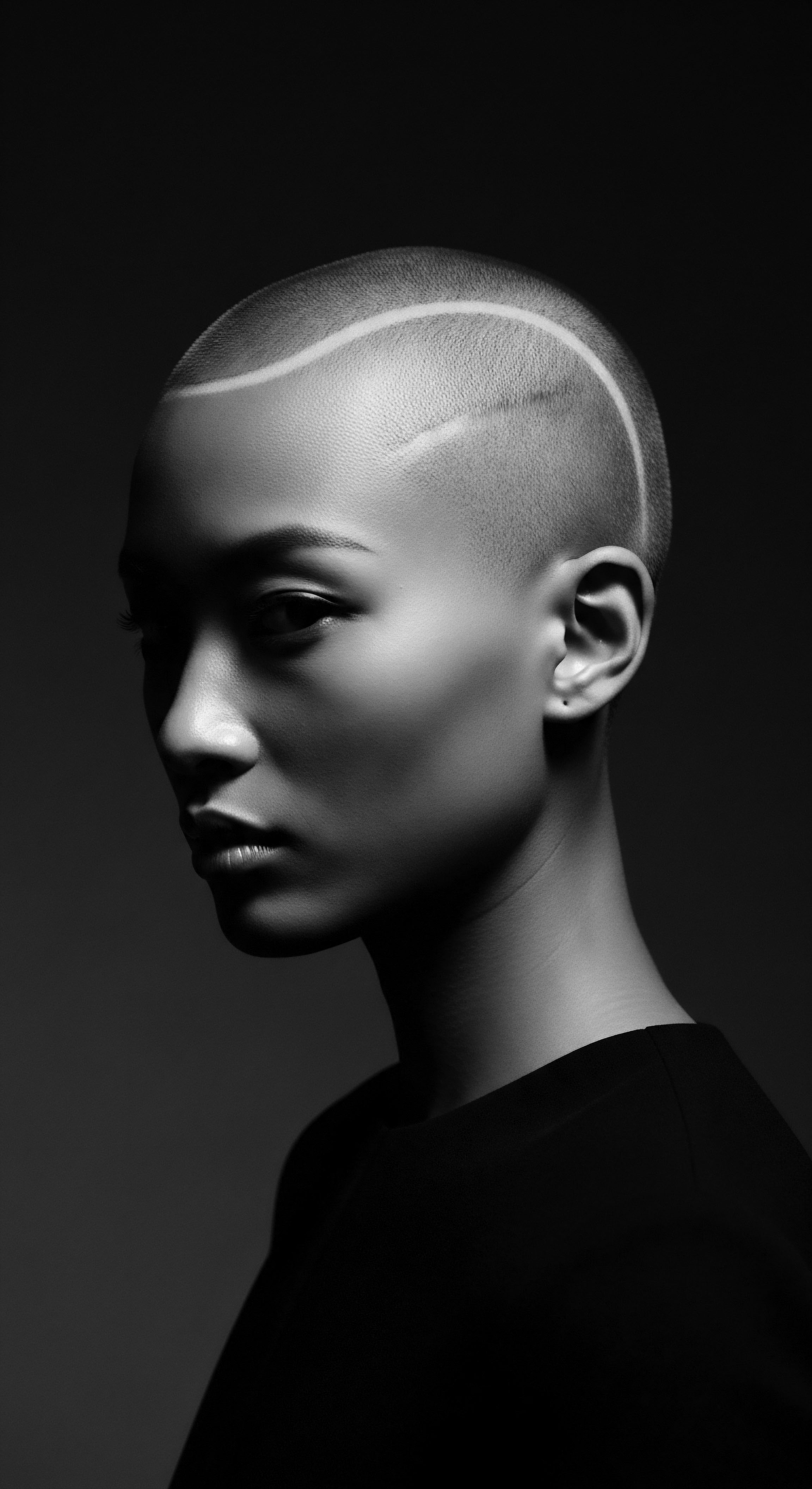
Roots
The story of textured hair, a vibrant helix spun from the very genesis of humanity, is intrinsically entwined with the earth’s benevolent offerings. Before bottles lined shelves, before laboratories synthesized compounds, ancestral hands reached for the bounty of the land, discovering within its heart, ingredients that spoke directly to the unique thirst and resilience of coily, kinky, and wavy strands. Among these, the unassuming shea butter, a gift from the Vitellaria paradoxa tree, stands as a testament to profound ancestral wisdom. Its journey from seed to sacred balm charts a heritage not simply of cosmetic application, but of deep communal connection, spiritual reverence, and practical sustenance for hair that danced with the sun’s embrace and absorbed the rhythms of the earth.
Consider the earliest mornings, perhaps in West African savannahs, where the shea tree, often dubbed the ‘tree of life,’ stood as a silent sentinel. Its fruits, gathered by women and children, held within them the promise of life-giving fat. The process of extracting this butter, often a labor-intensive but deeply communal endeavor, involved careful collection, crushing, roasting, grinding, and churning – each step performed collectively, fostering bonds that stretched beyond kin.
These gatherings were not simply about production; they were classrooms, temples, and social hubs, where stories were shared, songs were sung, and the intricate knowledge of hair care, passed down through generations, solidified. Shea butter became a literal and symbolic binder, holding together strands and societies.
How did these early communities discern the precise properties of shea? Observation, certainly, coupled with an intuitive understanding of natural remedies. They would have noted how its creamy texture melted upon the skin, offering relief from harsh sun and dry winds. Applied to hair, it would have quelled the thirst of thirsty coils, lending a subtle sheen and helping to manage the glorious volume that often defied simple manipulation.
This was empirical science, born of necessity and refined over centuries, long before microscopes revealed lipid structures. The very act of preparing and applying shea butter became a ritual, linking the individual to the collective and the present to the past.
From ancient West African communal gatherings, shea butter emerged as a central pillar of textured hair care, embodying ancestral knowledge and fostering deep societal bonds.

Ancient Understanding of Hair’s Composition
Ancestral communities, without the lexicon of modern biochemistry, possessed an astute understanding of what textured hair required. They recognized its tendency towards dryness, its glorious coils often struggling to distribute the scalp’s natural oils uniformly down the length of the strand. This inherent characteristic, a consequence of the hair shaft’s elliptical shape and the tight curvature of the coil, created a specific need for external emollients.
Shea butter, with its rich fatty acid profile – particularly stearic and oleic acids – provided exactly this. It acted as a sealant, wrapping the individual strands in a protective layer that minimized moisture loss and shielded against environmental stressors.
The knowledge of its benefits was not codified in textbooks; it was etched into the communal memory, recited in lullabies, and demonstrated through the tender strokes of a mother’s hands on her child’s scalp. This passed-down wisdom spoke to an intuitive grasp of hair’s anatomy and physiology, albeit through a different lens. They recognized the hair’s need for flexibility, for a certain pliability that prevented breakage. Shea butter provided this elasticity, allowing hair to bend and coil without snapping, a crucial factor for styles that demanded manipulation, like intricate braids and twists.
- Butyrospermum Parkii ❉ The botanical name for the shea tree, highlighting its unique place in the botanical world.
- Lipid Barrier ❉ Shea butter’s function in reinforcing the hair’s natural protective layer, preventing water loss.
- Hair Elasticity ❉ The butter’s role in improving the hair’s ability to stretch and return without damage, a boon for highly coiled strands.
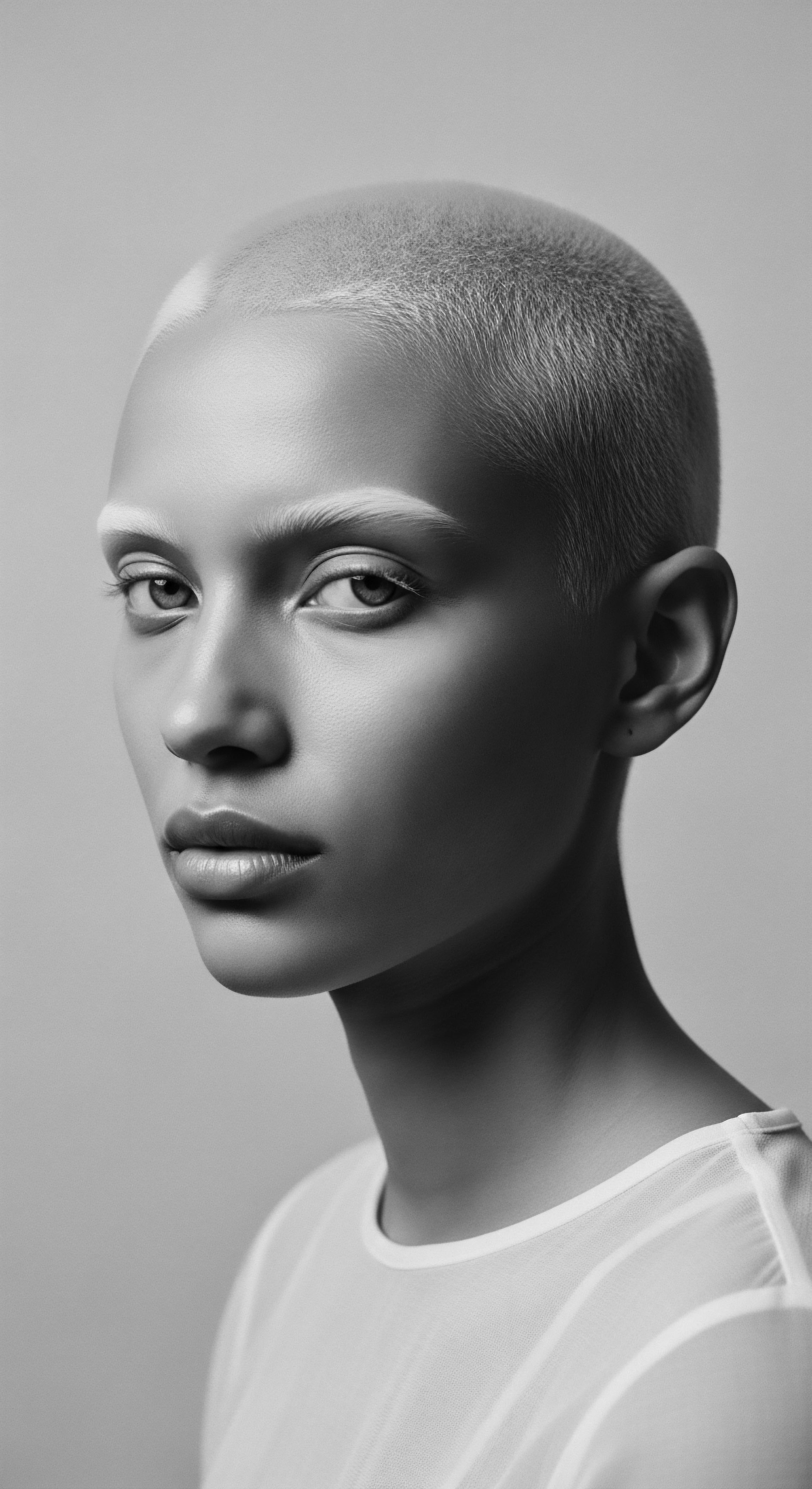
Shea’s Global Reach Through Heritage
While deeply rooted in West African traditions, the influence of shea butter, often carried through the transatlantic slave trade, extended its reach into diaspora communities. Enslaved Africans, forcibly removed from their ancestral lands, carried with them not only their memories and resilience but also their profound knowledge of plant-based care. The shea butter, whether directly available or adapted with local alternatives, became a symbol of continuity, a thread connecting them to a lost homeland. The techniques of applying emollients, massaging the scalp, and creating protective styles persisted, adapting to new environments but retaining their communal core.
This transference of knowledge, often clandestine and fiercely protected, underscored the importance of hair care as a means of cultural preservation. It was a silent act of defiance, a way to maintain identity and beauty in the face of dehumanization. The communal aspect of hair styling persisted in new forms, becoming a space for sharing grief, hope, and resistance. Even when the ingredient itself changed, the wisdom and the ritual remained, carried within the memory of hands and the collective spirit.
| Traditional Application Sealant for moisture retention on coils. |
| Modern Scientific Understanding Rich in fatty acids (oleic, stearic) that create an occlusive layer, reducing transepidermal water loss. |
| Traditional Application Softener for rough or dry hair. |
| Modern Scientific Understanding Emollient properties improve hair shaft lubricity, reducing friction and enhancing softness. |
| Traditional Application Protective shield against sun and wind. |
| Modern Scientific Understanding Contains unsaponifiable compounds that offer mild UV protection and act as antioxidants. |
| Traditional Application The enduring heritage of shea butter care aligns remarkably with contemporary scientific validations, proving ancestral insights. |
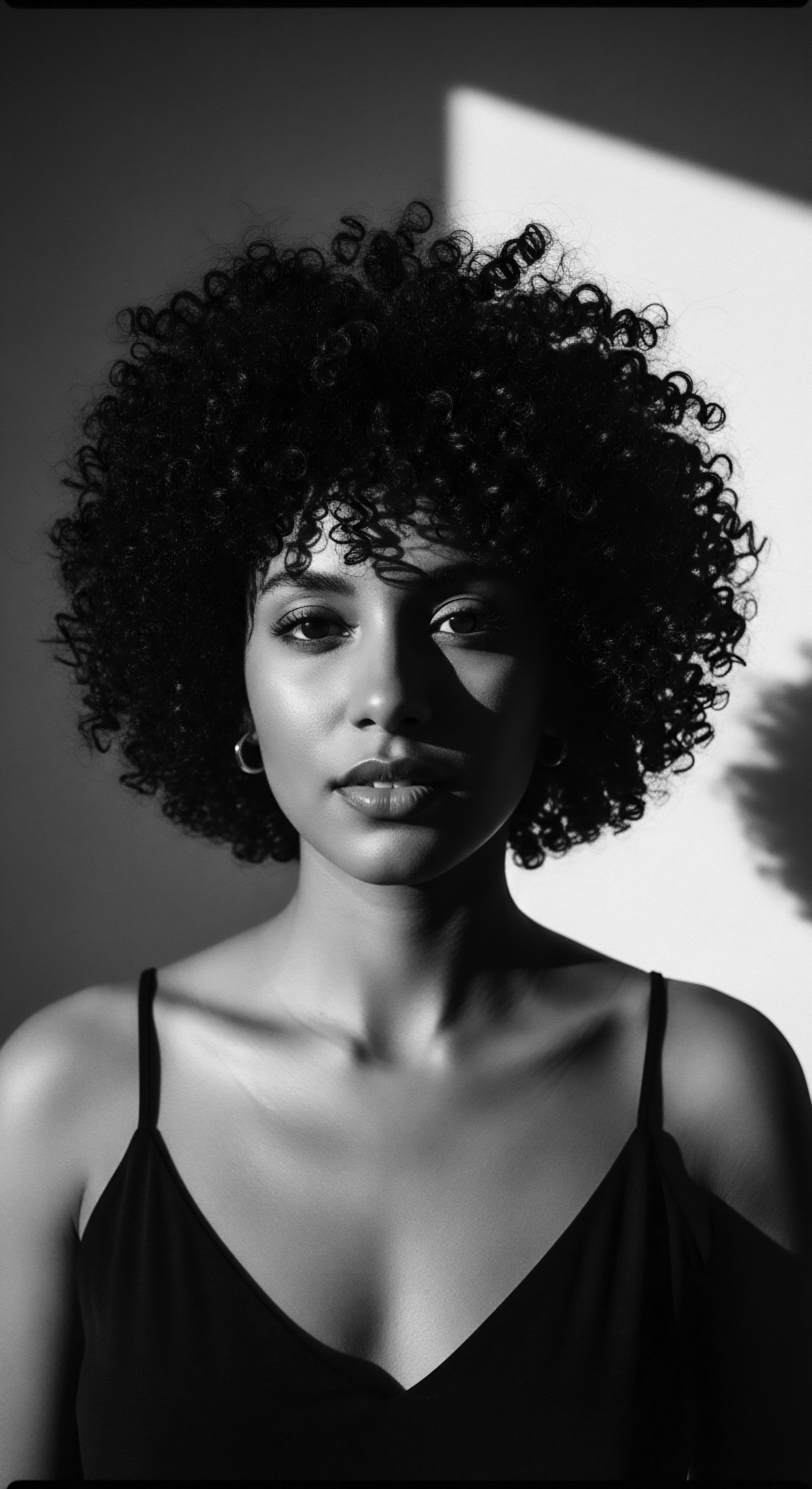
Ritual
The application of shea butter to textured hair transcended mere conditioning; it was, and in many communities remains, a ritual steeped in intention, connection, and generational transmission. These rituals were not singular events but ongoing practices, deeply interwoven into the fabric of daily life and special occasions. They were moments when knowledge, affection, and identity were shared, solidified, and celebrated within the communal sphere. The hands that prepared the butter were often the same hands that massaged it into scalps, detangled knots with practiced ease, and sculpted elaborate coiffures, each gesture carrying layers of meaning.
Consider the scene within a traditional African household or indeed, within a diasporic family gathered on a Sunday morning. The air might be thick with the scent of shea butter, perhaps warmed gently to enhance its pliability. A child might sit patiently between the knees of an elder, their head a canvas awaiting care. This wasn’t just hair being tended to; it was a connection being forged, stories exchanged, and lessons imparted.
The physical act of grooming became a vehicle for oral history, for teaching resilience, and for instilling a deep appreciation for one’s unique heritage. The shared bowl of shea butter, often passed from hand to hand, symbolized the collective responsibility for well-being and beauty.
Shea butter rituals served as profound intergenerational conduits, transmitting ancestral knowledge and fostering community bonds through shared hair care practices.
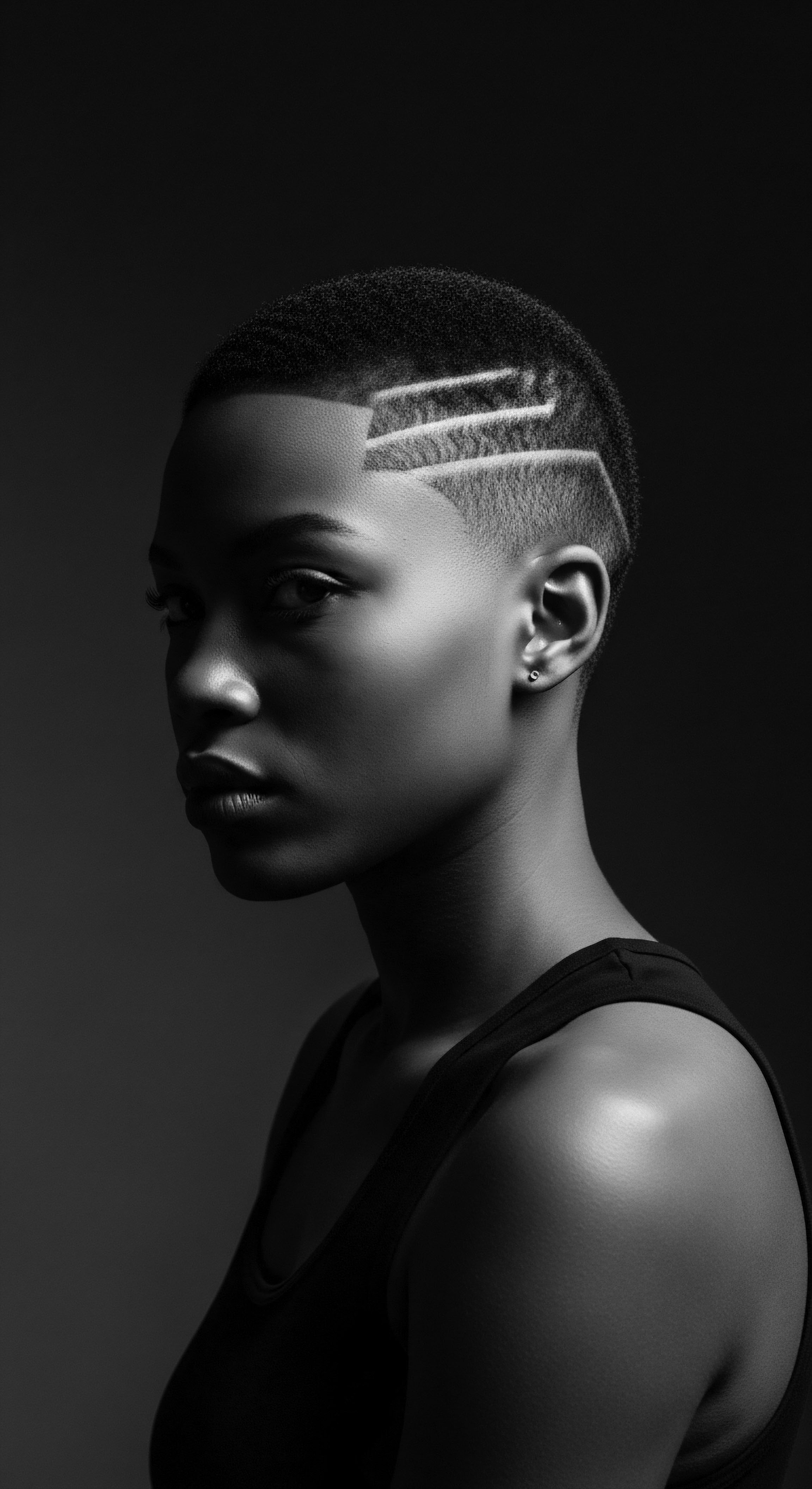
Communal Grooming as Social Cohesion
The practice of communal hair grooming, often centered around the application of shea butter or similar emollients, was a powerful mechanism for social cohesion. In many African societies, hair styling was rarely a solitary act. Women would gather, often under a shade tree or in a central courtyard, transforming hair care into a vibrant social event.
Here, mothers taught daughters, aunts guided nieces, and friends shared secrets and laughter. The repetitive, rhythmic motions of braiding, twisting, and oiling created a meditative space, allowing for deep conversation and the strengthening of familial and community ties.
Shea butter provided the necessary slip and moisture, allowing skilled hands to navigate the intricate patterns of textured hair without causing damage. It facilitated the creation of styles that could last for weeks, providing protection and a sense of collective artistry. These styles, often imbued with symbolic meaning—signifying marital status, age, community role, or even spiritual beliefs—were a visual language, a testament to shared identity. The butter, therefore, was not merely a product; it was an enabler of cultural expression, a silent partner in the creation of living narratives.

Shea Butter in Traditional Protective Styling?
How did shea butter play a vital role in traditional protective styling? For centuries, communities understood the need to protect textured hair from environmental elements and mechanical stress. Styles like cornrows, twists, and various forms of braiding were developed not only for aesthetics but for practical longevity and hair health.
Shea butter was an indispensable component in these endeavors. Its rich consistency provided lubrication, making the hair more manageable and less prone to breakage during the arduous process of sectioning and intertwining strands.
Moreover, once a protective style was in place, shea butter would be regularly applied to the scalp and along the length of the braids or twists. This application kept the scalp moisturized, preventing itching and flaking, and helped to maintain the integrity of the hair within the style. It acted as a barrier against dust, dryness, and the sun’s harsh rays, allowing the hair beneath the style to rest and retain its moisture. This continuous care with shea butter extended the life of the protective style, a practical necessity in times and places where daily washing was not feasible or desired.
- Detangling Aid ❉ The smooth texture of shea butter helped to loosen knots and tangles, minimizing breakage during pre-styling preparation.
- Scalp Health ❉ Regular application nourished the scalp, preventing dryness and supporting a healthy environment for hair growth within protective styles.
- Style Longevity ❉ Shea butter helped maintain the moisture and structure of braids and twists, extending the duration of protective styles.
| Traditional Styling Technique Intricate Braiding |
| Communal Practice with Shea Butter Groups of women gathering, sharing stories while hands deftly braid, butter applied for ease of sectioning and shine. |
| Traditional Styling Technique Twisting and Coiling |
| Communal Practice with Shea Butter Mothers teaching daughters, butter applied to define coils and twists, fostering a shared understanding of hair texture. |
| Traditional Styling Technique Adornment Integration |
| Communal Practice with Shea Butter Collective preparation of hair for beads or shells, using butter to secure and protect hair, symbolizing shared aesthetic heritage. |
| Traditional Styling Technique From daily routines to celebratory adornments, shea butter facilitated communal styling, preserving and expressing collective heritage. |

Relay
The journey of shea butter in communal hair care is a powerful relay race across generations, a continuous passing of the torch of wisdom from ancestral hands to contemporary ones. This relay is not merely about maintaining a tradition; it embodies a dynamic process of adaptation, resilience, and reclamation, particularly significant for textured hair heritage. The practices that began as necessities—protecting hair from the elements, managing its unique structure—evolved into expressions of identity, resistance, and a deep reverence for natural beauty. Understanding this relay requires looking beyond surface-level techniques, delving into the very social and economic structures that underpinned these traditions.
The communal harvesting and processing of shea butter, predominantly by women, created an indigenous economy that empowered communities. It established a system of shared labor and distributed benefits, strengthening social fabric. This aspect, often overlooked in discussions of hair care, reveals a profound connection between economic self-sufficiency, collective well-being, and the practical application of a natural resource. The butter itself became a medium of exchange, a tangible representation of collective effort and shared prosperity, further cementing its place not just in hair, but in the lifeblood of the community.

Economic and Social Dimensions of Shea Butter Production?
How did the production of shea butter influence communal structures beyond hair care? In many West African societies, the entire process of shea butter production, from fruit gathering to final churning, has historically been and remains largely a women’s enterprise. This collective effort provides a significant source of income and empowerment for women, often referred to as ‘women’s gold.’ The communal aspect ensures shared knowledge, shared labor, and shared benefits, creating a robust, localized economy that contributes to household and community resilience (Nyamongo & Ndungu, 2017). The proceeds from shea butter sales often fund children’s education, healthcare, and other communal needs, intertwining its economic value with its cultural and practical uses, including hair care.
The historical example of the shea processing cooperatives in Burkina Faso demonstrates this profound connection. These cooperatives, often composed entirely of women, not only preserve the traditional methods of shea butter extraction but also provide vital economic independence. The collective gathering, the songs sung during the arduous churning, and the shared anticipation of the finished product reinforce a bond that goes beyond economic transaction. The very butter that nourishes hair and skin becomes a symbol of autonomy and collective strength, reflecting the deeply intertwined nature of communal care and economic livelihood within textured hair heritage.
Shea butter’s communal production, largely driven by women, established a vital indigenous economy that sustained communities and strengthened social bonds.

Science Validating Ancestral Practice
The wisdom of ancestral hair care, long dismissed by colonial perspectives, finds increasing validation in modern scientific inquiry. For example, research into the chemical composition of shea butter confirms what generations of practitioners instinctively knew ❉ its unique blend of fatty acids (oleic, stearic, linoleic, palmitic) and unsaponifiable compounds (triterpenes, tocopherols, phenols) provides exceptional emollient, anti-inflammatory, and antioxidant properties (Honfo et al. 2015). These properties are especially beneficial for textured hair, which tends to be drier and more susceptible to damage due to its coil pattern.
The unsaponifiable matter, a fraction of the butter that doesn’t convert into soap when combined with lye, is particularly significant. It includes compounds like cinnamic acid esters, known for their ability to absorb UV radiation, offering a natural, albeit mild, form of sun protection (Vermaak et al. 2011).
This scientific understanding aligns perfectly with the ancestral practice of using shea butter to protect hair from harsh climatic conditions. The “how” of its function becomes clear, providing a bridge between ancient intuition and contemporary understanding, thereby enriching our appreciation for the sophistication embedded within traditional practices.
- Oleic Acid ❉ A monounsaturated fatty acid that provides deep moisture and penetrates the hair shaft, improving softness.
- Stearic Acid ❉ A saturated fatty acid that acts as an excellent emollient and emulsifier, contributing to the butter’s protective barrier.
- Unsaponifiables ❉ Non-glyceride components (e.g. vitamins A, E, F) that offer healing, anti-inflammatory, and antioxidant benefits to scalp and hair.
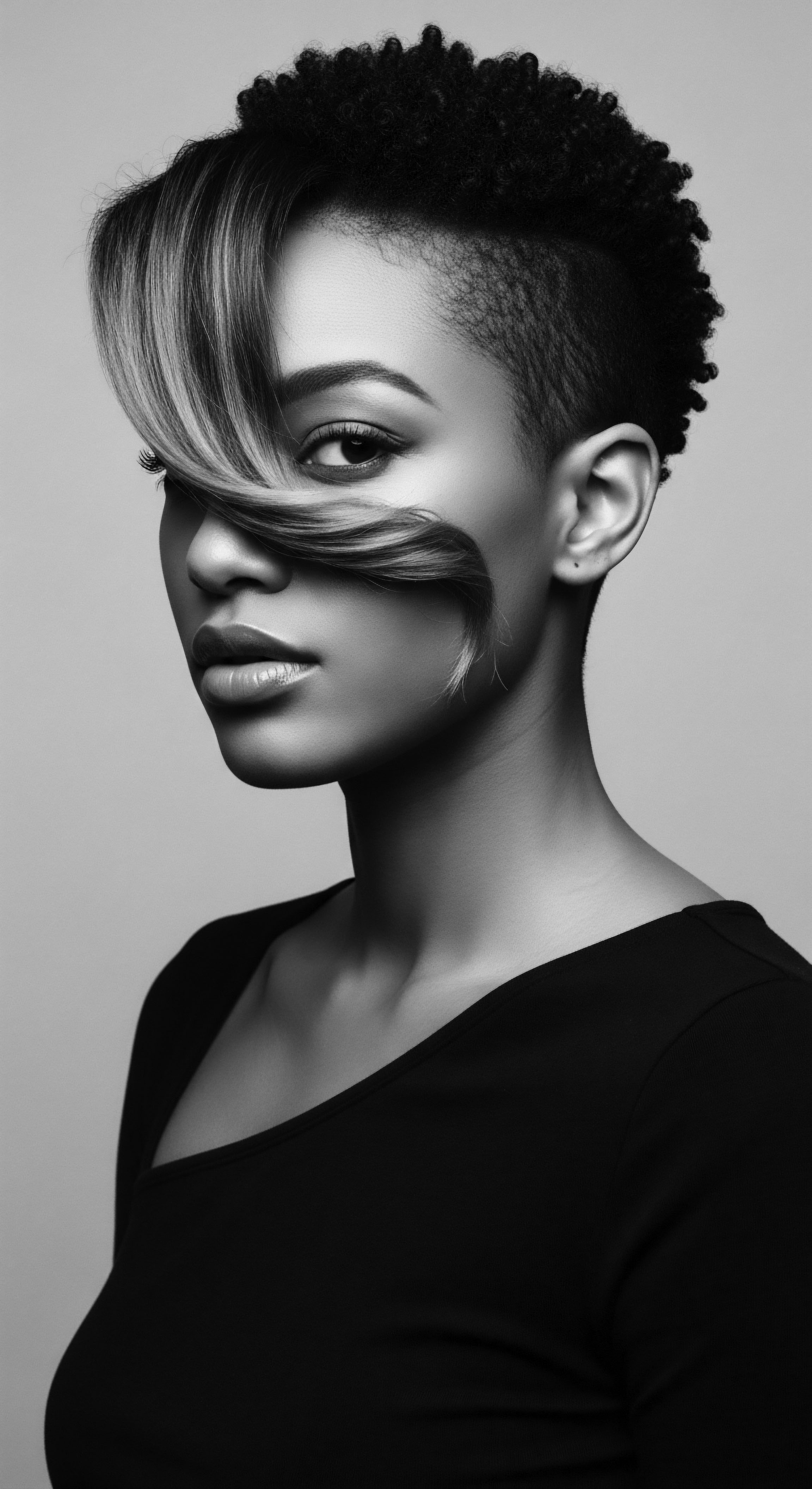
How Does Textured Hair Heritage Influence Modern Care?
How does textured hair heritage influence modern hair care practices and product development? The ancestral connection to shea butter and communal care has profoundly shaped contemporary approaches to textured hair. The demand for natural, ethically sourced ingredients has led to a resurgence of interest in shea butter, not only as a raw material but as a symbol of authentic care.
Modern brands, particularly those founded by individuals from Black and mixed-race communities, are increasingly foregrounding the heritage aspect, emphasizing the continuity of wisdom. This includes referencing traditional methods, celebrating the communal origins of ingredients, and designing products that specifically address the unique needs of textured hair, often validated by scientific research.
The relay continues through education and advocacy. Hair care becomes a space for cultural affirmation, where the legacy of communal practices encourages self-acceptance and appreciation for one’s natural hair texture. This extends to the sharing of knowledge online, through workshops, and within families, mirroring the intergenerational transmission of old. The resilience of these traditions, nurtured by shea butter’s tangible benefits and symbolic resonance, ensures that the wisdom of the past remains a guiding light for the future of textured hair care, connecting biological understanding with cultural continuity.

Reflection
The story of shea butter and communal hair care for textured strands is far grander than a simple tale of botanical benefits. It is a profound meditation on interconnectedness, a living archive inscribed within the very helix of our hair. This journey, from the yielding embrace of the shea tree to the tender touch of communal hands, speaks to an enduring heritage that transcends geography and time. It reminds us that care, in its deepest sense, is never an isolated act, but a dialogue between past and present, self and community, human wisdom and earth’s generosity.
In every application of shea butter to textured hair, there is an echo of ancestral practices, a silent conversation with those who came before us. This isn’t nostalgia; this is legacy. This understanding invites us to approach our hair not as a problem to be solved, but as a sacred extension of our being, a vessel of history, and a canvas for identity.
The resilience of textured hair, so often misunderstood or marginalized, finds its strength mirrored in the unwavering presence of shea butter within its care lineage. The journey of each strand becomes a part of this larger human narrative, a continuous thread within the “Soul of a Strand.”

References
- Nyamongo, D. & Ndungu, Z. (2017). Women and Shea Nuts ❉ Economic Empowerment through Collaborative Shea Butter Production in Burkina Faso. Journal of African Studies and Development, 9(2), 23-35.
- Honfo, F. G. Houssou, P. A. Akissoe, N. H. & Linnemann, A. R. (2015). Shea nut (Vitellaria paradoxa) kernel fat content as affected by ecotype, ripening and storage condition. African Journal of Food Science, 9(7), 405-412.
- Vermaak, I. Kamatou, G. P. & Viljoen, A. M. (2011). African plant oils with a potential for cutaneous application. Planta Medica, 77(9), 893-905.
- Opoku, R. (2007). The Hair of the African Woman in Ghanaian Socio-Cultural Life. Research Review (NS), 23(1), 77-89.
- Byrd, A. D. & Tharps, L. D. (2001). Hair Story ❉ Untangling the Roots of Black Hair in America. St. Martin’s Press.
- Kaba, A. (2007). The African Origins of Hair Braiding. Journal of Black Studies, 38(1), 3-17.
